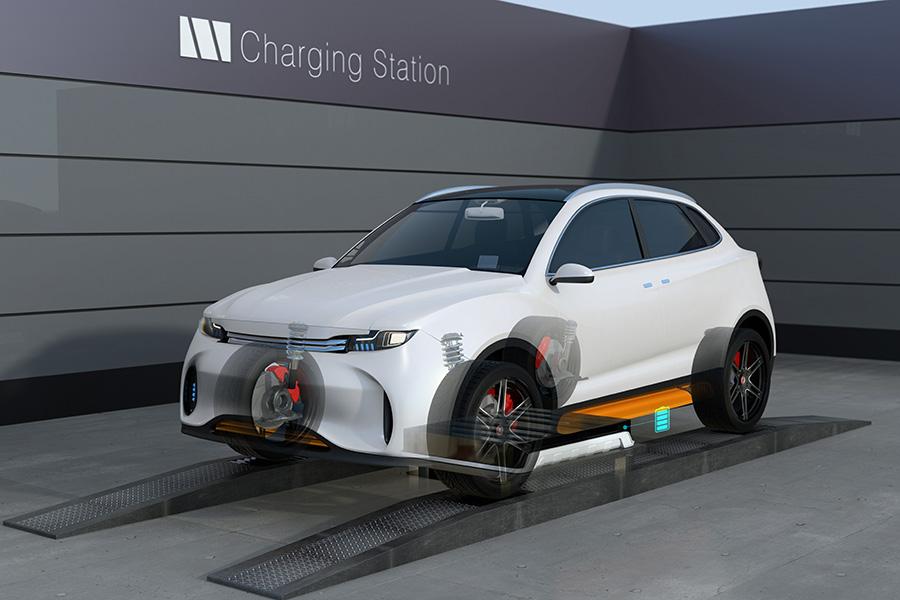Battery swapping: The future of electric vehicle charging
While the original battery swapping fell largely flat due to a focus on electric cars, the current avatar is focused primarily on two-wheelers and other forms of micro-mobility
It’s inevitable that any discussion on electric vehicles will inevitably gravitate towards charging infrastructure. In nearly all instances, these conversations center around the deployment of charging plug points where the vehicles draw electric current from the local power grid. These charging stations are designed to dispatch AC or DC power (alternating current or direct current, respectively). Much of the debate on public charging infrastructure centers around the deployment of DC charging infrastructure given it’s approximately 5X faster than AC charging infrastructure. There’s just one small issue that it is also nearly 100X times the cost.
The simple reality is that DC charging stations will scale much slower than AC charging given this painful economic reality. Even at significant scale, it’s difficult to see the cost of DC charging stations dropping by more than 50 percent over the next few years. This means you will still see DC charging stations in the Rs 2 lakh range. While these machines do provide a near 100 percent charge in 30-60 minutes, it is clear that it will be very challenging to reach a deployment saturation point in the near to medium term. As such, it certainly appears that an alternative method of charging is required if India is to truly breakout on the electric mobility front in the 2-3 years time horizon.
Enter stage right, an alternative electric charging option, battery swapping. While the concept had a rather inauspicious start in Europe and Israel last decade, the technology is now ready for prime time as new mobility used cases rapidly emerge. In more recent times, companies like Gogoro out of Taiwan have made significant advances in battery swapping technology. The basic swapping approach is rather simple, in that the user can quickly replace a discharged battery with a fully-charged new battery in less than two minutes. It’s even easier than a trip to the petrol bunk. Intelligent internet of things (IoT) provides a clear picture into the charge level of the battery and provides helpful guidance on which battery to select at the swapping station. This way, it’s easy to ensure a full top up instead of taking an only partially charged battery.
While the original battery swapping fell largely flat due to a focus on electric cars, the current avatar is focused primarily on two-wheelers and other forms of micro-mobility given the more consistent form factor designs of the battery.
India is a market dominated by the two and three wheelers. The numbers are simply staggering. With over 100 million two wheelers and more than five million three wheelers, the scale is indisputable. Moreover, these numbers are set to grow consistently over the next decade. As such, it’s clear that two and three wheelers mark an excellent starting off point for battery swapping in the country. Given the compact form factor for both vehicles, battery swapping stations can easily pack in 15-20 replacement batteries. With this density of batteries, the station can more closely mirror the utility of an actual petrol bunk compared to a charging station. The sheer number of vehicles that can leverage a swapping station compared to a charge point is 10X. When it comes to scale, this simply cannot be defeated.
Perhaps the best feature of battery swapping is its ultimate convenience and overall price point. The actual modularity of the setup is inspiring. Unlike with battery charging stations, the physical foot print of battery swapping is materially less since it’s more or less just a series of small storage compartments for batteries. Since most of the batteries for two or three wheelers are in the 7-15 kg range, it’s clear that very little physical space is required. Given this reality, distribution becomes far easier and it’s not difficult to imagine these battery swapping setups strategically placed across neighborhoods at first/last mile locations.
The possibilities for battery swapping placement are endless. It can be a restaurant, an ATM, a gym, there’s really no place that’s out of bounds. In a market like India, where physical space is always at a premium in urban localities, it’s quite clear that the micro-distribution possibilities of swapping are highly alluring. Since the swapping station has inherent redundancy with multiple batteries, the station can rely on a low current connection since individual batteries can still take 3-4 hours to charge in full without any impact on overall convenience. Remote monitoring through IoT can better ensure the station is optimised properly. Perhaps the best part of the battery swapping infrastructure is that it doesn’t require any investment on the part of local power distribution companies.
Another critical characteristic of battery swapping stations is the ability to self-serve conveniently. This is a constant crib at petrol bunks and even with complicated DC charging stations. A simple digital authentication along with a seamless digital payment can offer up access to the actual battery. Given the battery’s low weight, it’s quite easy for anyone to simply pick up and swap in the respective two or three wheeler. Ultimately, it’s as light as carrying a full grocery bag.
When it comes to convenience, cost and scalability for India’s rapidly growing micro-mobility EV segment, it’s quite clear that battery swapping will be the form factor to beat in the future.
The author is a Co-founder of Zoomcar.
The thoughts and opinions shared here are of the author.
Check out our end of season subscription discounts with a Moneycontrol pro subscription absolutely free. Use code EOSO2021. Click here for details.
